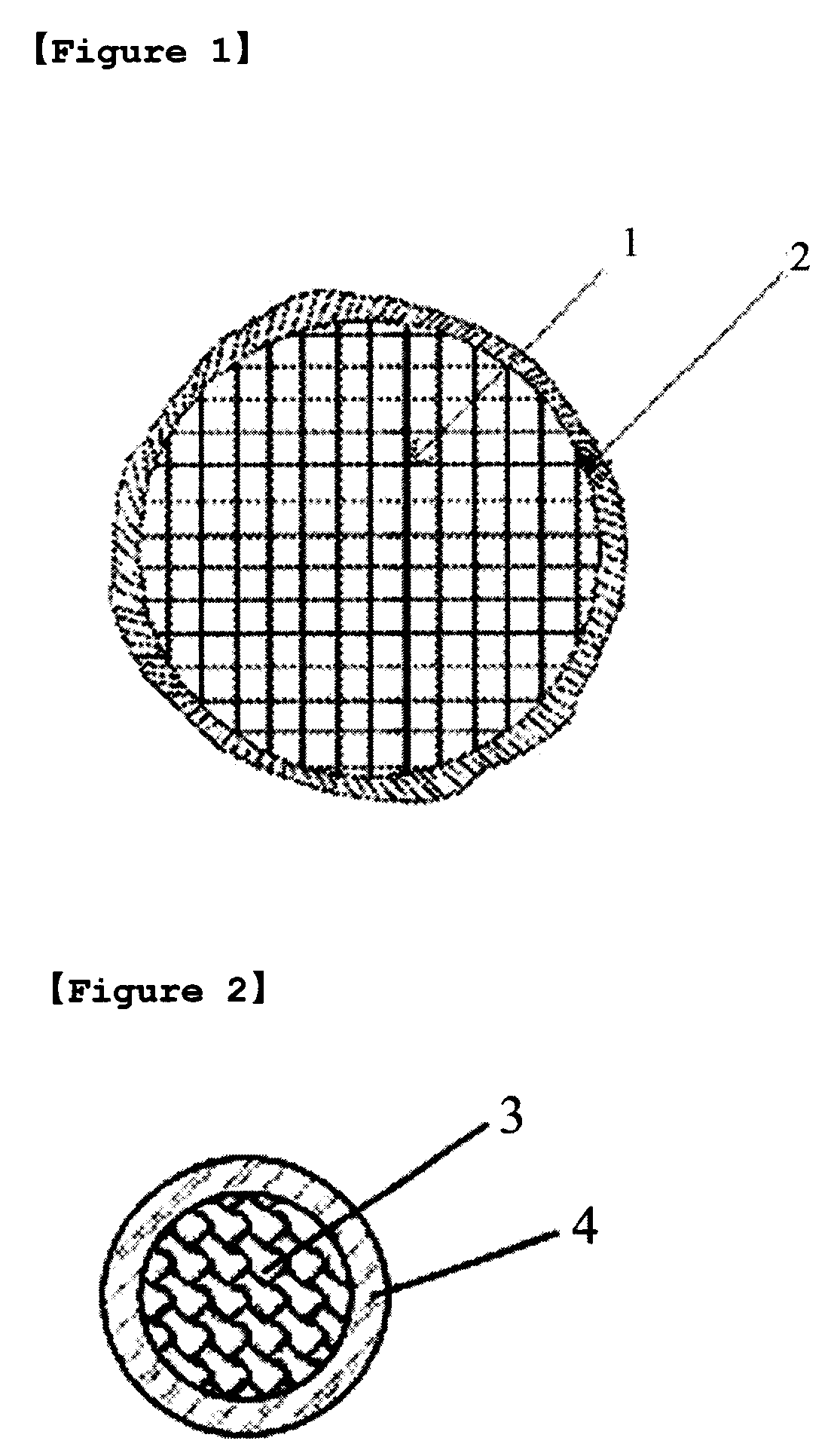Advanced anisotropic insulated conductive ball for electric connection, preparing method thereof and product using the same
- Summary
- Abstract
- Description
- Claims
- Application Information
AI Technical Summary
Benefits of technology
Problems solved by technology
Method used
Image
Examples
manufacturing example 1
Manufacture of Insulation Resin Powder (Core-Shell-Structured Resin) According to the Present Invention
(1) Manufacture of a Shell (SAA Resin)
[0045]The mixture of styrene (10.0 g), acrylic acid (10.0 g), and α-methyl styrene (10.0 g), and the mixture of tert-butyl peroxybenzoate (1.2 g), dipropylene glycol methyl ether (3.0 g), 2-hydroxyethyl acrylate (HEA) (10.0 g), and 2-hydroxyethyl methacrylate (10.0 g) were put into a 100-ml high-pressure reactor having a stirrer attached, and heated until the temperature of the reaction mixture reached 200° C. The reaction mixture was stirred for 20 minutes at this temperature, cooled to a room temperature, and dried in a vacuum oven to manufacture the shell (of SAA resin).
(2) Manufacture of a Core-Shell Resin
[0046]15 g of the above SAA resin was melted in 80 g of the mixture of water and liquid ammonia. If necessary, the mixture was heated to about 90° C. and pH was adjusted to be about 9.0 by controlling the amount of liquid ammonia. Potassiu...
manufacturing example 2
Manufacture of Insulation Resin Powder (Core-Shell-Structured Resin) According to the Present Invention
(1) Manufacture of a Shell (SAA Resin)
[0047]Ammonium persulfate (1.0 g) was added to the mixture of methacrylic acid (5.0 g), acrylic acid (5.0 g), ethyl acrylate (20.0 g), and acrylonitrile (3.0 g), and the mixture was put into a 100-ml high-pressure reactor having a stirrer attached, and heated to 80° C. while adding a little amount of an anionic surfactant. The reaction mixture was stirred at this temperature for 2 hours, and cooled to a room temperature to obtain the reaction product.
(2) Manufacture of a Core-Shell Resin
[0048]PH of the above reaction product was adjusted to be about 9.0 by controlling the amount of liquid ammonia. Ammonium persulfate (1.0 g) was put into this solution, the temperature of the solution was adjusted to 80° C., and the mixed solution of styrene (50 g) and methacrylic acid (20 g) was added slowly to the mixture for 1 hour while adding a little amoun...
manufacturing example 3
Manufacture of Insulation Resin Powder
[0049]Styrene (10 g) and 2-ethyl hexyl acrylate (10 g) were put into a 100-ml Erlenmeyer flask along with toluene (50 g), and mixed. 0.2 g of azoisobutyronitrile (AIBN) was added to the mixture, and the mixture was heated to 70° C. and stirred for 24 hours. The reaction product was obtained in the form of precipitates by putting it in methanol in drops, and resin powder was obtained by drying the precipitates in a vacuum oven under a reduced pressure.
Preferred Embodiments 1˜5
[0050]Anionic conductive balls for electric connection coated with insulation resin layers comprised of an insulation resin was obtained by coating the conductive balls, in which the surfaces of divinylbenzene-acryl co-polymer particles having the diameter of 5 μm were plated with Ni and Au, with the aqueous insulation resin solution obtained in the above Manufacturing Examples 1 and 2. The process of coating was as follows:
PUM
| Property | Measurement | Unit |
|---|---|---|
| Thickness | aaaaa | aaaaa |
| Diameter | aaaaa | aaaaa |
| Glass transition temperature | aaaaa | aaaaa |
Abstract
Description
Claims
Application Information
 Login to View More
Login to View More - R&D
- Intellectual Property
- Life Sciences
- Materials
- Tech Scout
- Unparalleled Data Quality
- Higher Quality Content
- 60% Fewer Hallucinations
Browse by: Latest US Patents, China's latest patents, Technical Efficacy Thesaurus, Application Domain, Technology Topic, Popular Technical Reports.
© 2025 PatSnap. All rights reserved.Legal|Privacy policy|Modern Slavery Act Transparency Statement|Sitemap|About US| Contact US: help@patsnap.com


